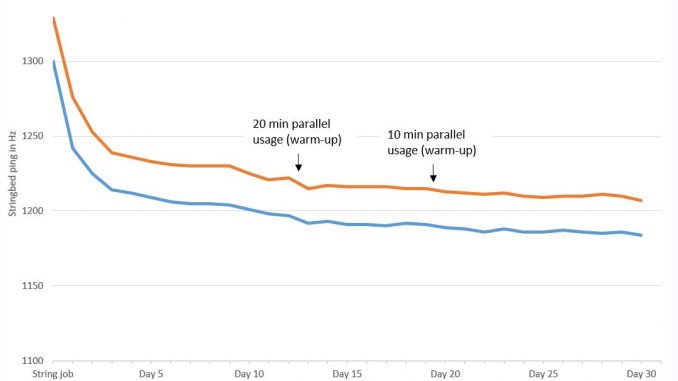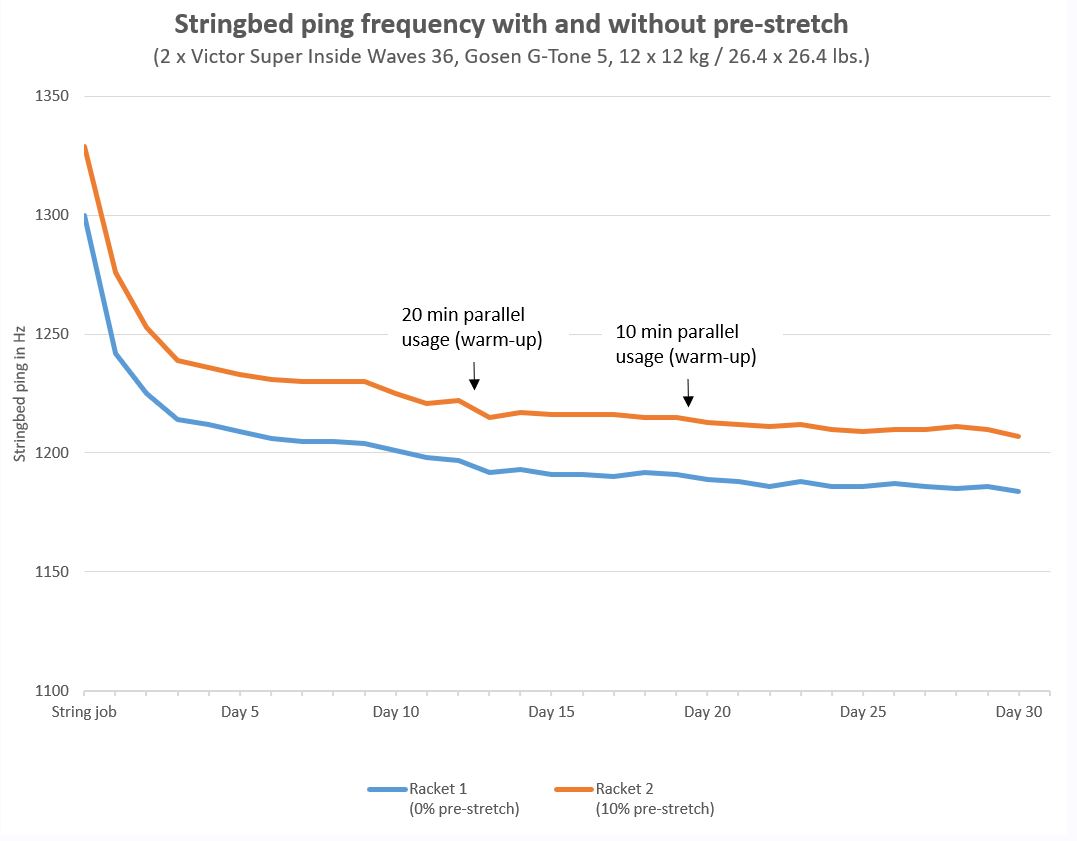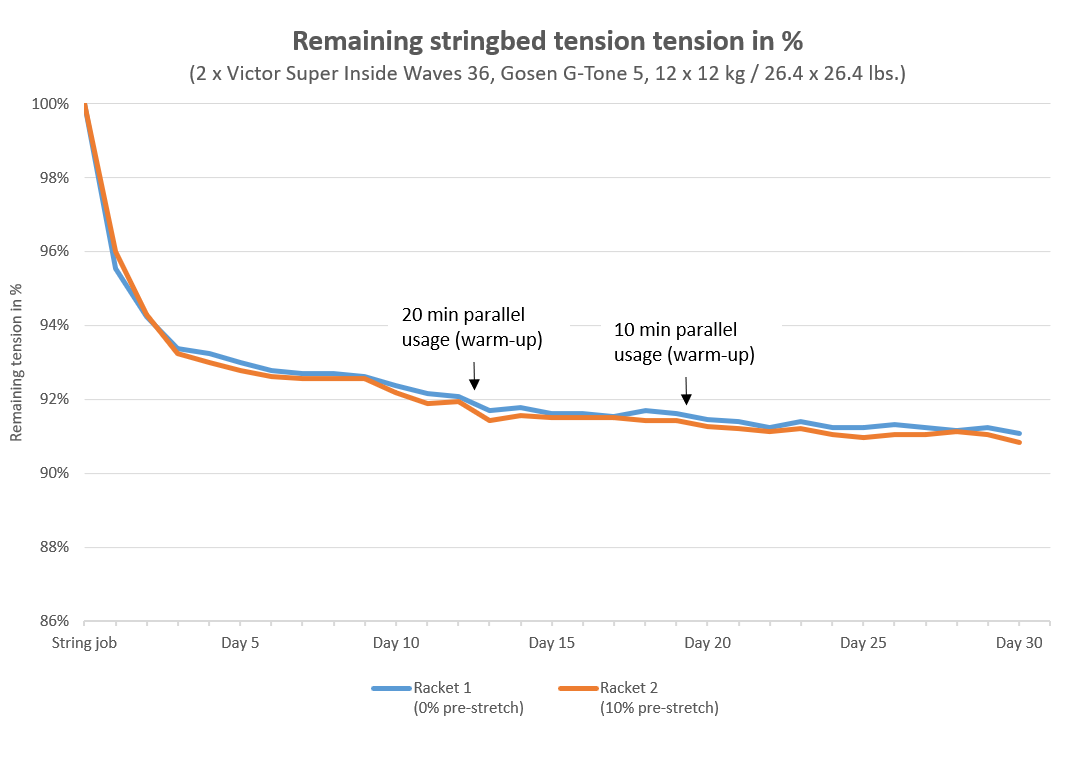
Another heavily discussed topic is the use of machine pre-stretch. Does it really help to reduce tension loss over time? Let’s find out!
Rackets: 2 x Victor Super Waves 36
String: Gosen G-Tone 5 (0.65 mm), yellow
Stringer: myself
Machine: StringMaster Deluxe with WISE tension head
Strung directly back to back with same process flow details (Haribito 1-Piece, no added tension before tie-off knots, no double pulls)
Tension settings:
Racket #1: 12 x 12 kg (26.4 x 26.4 lbs.), 0% pre-stretch
Racket #2: 12 x 12 kg (26.4 x 26.4 lbs.), 10% pre-stretch
For reference, here’s how the pre-stretch function on the WISE looks like:
So it adds that extra 10% in the initially pulled tension for <1 sec. and then falls back to the set tension.
Measurement method is the same as in the previous experiment.
Results
Both rackets were always stored next to each other, no change of storage location and conditions this time (which made it pretty boring tbh…).
First, let’s look at the absolut ping values:

Let’s translate that into percentages:

Raw data file:
https://www.dropbox.com/s/ucxpmrauvyyvpaw/Tension Loss Pre-Stretch.xlsx?dl=0
Conclusions
The results are -again- very clear and don’t leave much room for additional mumbo jumbo strining voodoo hearsay.
Both rackets behave indentically (given the measurement inaccuracy) in terms of tension loss over time.
The only real difference is the starting point which is almost 30 Hz higher with the 10% PS enganged which can lead to the impression that there is an improved tension retention over time. A likely explanation for the higher initial tension could be that due to friction, a certain amount of the overstretch remains in the pulled string – especially on the cross strings.
As long as the maximum tension remains within the elastic limits of the string, that short tension “overload” doesn’t seem to change anything in the structure. Results may vary if tensions are even higher and the string gets pushed over the elastic limit – although I’m afraid this will only have negative effects in terms of repulsion.
Also, a different behaviour of the tension head might produce different results. For example, some Victor machines apparently pull to the 10% extra, then dropping back significantly below the set value and then pull again to the set tension. My guess is, that this could also take away the initial difference since the effect of the string friction will have less impact.
Bottom line
Don’t worry about the missing pre-stretch function if you are still on a manual machine. Just add 1 lb. and you would have the same result.